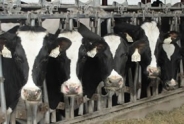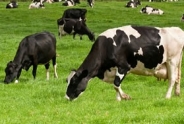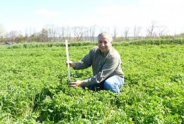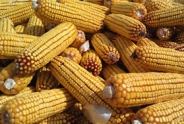About Program
 The South Central NY Dairy & Field Crops Program provides educational opportunities and technical assistance to help the industry with emerging issues, production bottlenecks, and new technologies. Our primary audiences are dairy and field crop producers as well as agri-service providers with secondary audiences of the media, non-farm residents and consumers. We focus on areas that will help improve farm profitability within the region since farm financial success is a key to maintaining a viable dairy and field crops industry. Our program's education helps our industry respond to both internal and external forces that help it keep pace in a rapidly changing world.
The South Central NY Dairy & Field Crops Program provides educational opportunities and technical assistance to help the industry with emerging issues, production bottlenecks, and new technologies. Our primary audiences are dairy and field crop producers as well as agri-service providers with secondary audiences of the media, non-farm residents and consumers. We focus on areas that will help improve farm profitability within the region since farm financial success is a key to maintaining a viable dairy and field crops industry. Our program's education helps our industry respond to both internal and external forces that help it keep pace in a rapidly changing world.The dairy and field crops sector brings significant economic activity to the region ($411 M in milk income alone). Dollars produced from agriculture have one of the largest multiplier effects. Farms make a significant contribution to the local tax base and have been found in several cost of service studies to demand less in services than they pay in taxes compared to residences (1). Farms maintain open space which provides the community with beautiful landscapes and recreational land.
(1) Cost of Community Services Studies
American Farmland Trust; Northampton, MA: American Farmland Trust; FIC Fact Sheet and Technical Memo; page(s) 6; 2010; National; Fact Sheets and Technical Memos Cost of Community Services Studies.
- Enhance the profitability of farmers to maintain a strong regional dairy industry,
- Create greater awareness of trends and options to help producers achieve family and business goals,
- Maintain environmentally responsible agricultural practices, and
- Encourage a better understanding of agriculture by the general community.
This program is supported by Cornell University and the Cornell Cooperative Extension Associations of Broome, Cayuga, Chemung, Cortland, Tioga & Tompkins Counties
The South Central New York Dairy and Field Crops is supported,
in part, by
six county Cornell Cooperative Extensions including:
Broome, Cayuga, Chemung, Cortland, Tioga
and Tompkins Counties.
To visit one of these Cornell Cooperative Extension's web sites,
simply click on a county within the map.
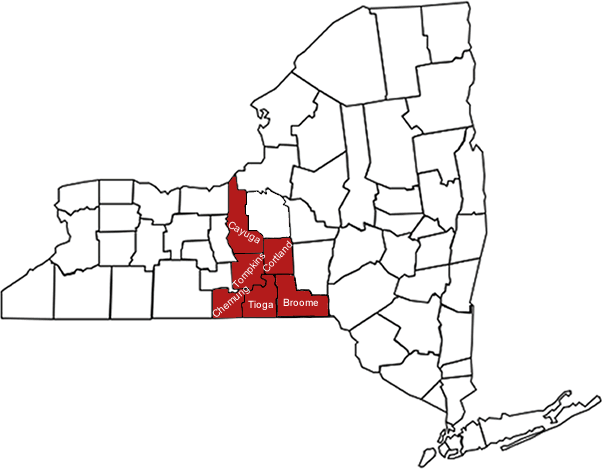
Upcoming Events
Winter Bale Grazing Pasture Walk
January 10, 2026
Truxton, NY
Join us for the second Bale Grazing Winter Pasture Walk!
Have you heard about or seen bale grazing and wondered if it would work for you?
Do you want to learn the nuances and logistical context for implementing this regenerative practice?
Are you interested in seeing the impacts of bale grazing on land and animals from a practicing farmer?
If you answered Yes to any question, The Northeast Region National Grazing Lands Coalition, the Cornell Cooperative Extension Hillside Farms are teaming up to showcase our Second Bale Grazing Winter Pasture Walk!
Boots in the Barn: Webinar Series
January 13, 2026
Boots in the Barn: Cornell Dairy Research Updates
Webinar Series every Tuesday starting January 13th @ 12:00pm to February 24th.
2026 Winter Crop Meeting
January 22, 2026
Auburn, NY
Connect with the agricultural community and many key note speakers on the folllowing topics:
- Emerging Innovation in Plant Breeding and Technologies - A Peek at the Future by Ben Rogers, Pioneer Field Agronomist
- Managing Herbicide-Resistant Weeds in NY Corn & Soybean by Dr. Vipam Kumar, NYS Extension Weed Scientist, Cornell University
- Livestock Risk Protection (LRP) Insurance Program by KC Slade, Risk Management Specialist, Farm Credit East—Crop Growers
- Birds & the Bees Legislation and the Fate of Neonics by Janice Degni, Extension Field Crop Specialist
- Emerging Disease Pests and Soil Borne Diseases of Soybean by Dr. Camilo Parada Rojas, NYS Extension Plant Pathologist, Cornell University
- Solar Farms—Benefit or Detriment? by Mr. Michael McMahon, Chair, Homer Town Planning Board
4 DEC credits in categories 1A and 21-25. 1.5 PM, .5 CM and 1 PD CCA credits available.
Please send your DEC license number in the Notes to Us when you register on-line.
Announcements
USDA Contract Freezes and Terminations: Legal Action Steps for Farmers
For Farmers with Signed EQIP and CSP ContractsThis resource is written for farmers and ranchers nationwide who have a signed contract with USDA NRCS under the EQIP or CSP program for environmental improvements but have concerns that their contract is frozen, under review, or terminated, and who are uncertain of their rights to receive reimbursement as well as their ongoing obligations under the signed contract.
Version: 1.0
Issue date: Feb 28, 2025
A downloadable factsheet is available at our BUSINESS tab on the top of our webpage.
Additional Information: www.farmcommons.org
USDA Contract Freezes: Filing an NAD Appeal or Demand Letter
This resource is written for farmers and ranchers nationwide who have a signed contract with USDA NRCS under the EQIP or CSP program for environmental improvements and want more information on the mechanics of filing a National Appeals Division (NAD) appeal. This resource includes sample letters.
USDA NAD Appeal https://www.usda.gov/about-usda/general-information/staff-offices/office-hearings-and-appeals/national-appeals-division/nad-appeals
Farm Participants Needed for Bale Grazing Grant!
Information on the Project:- Approximately 10 acres total needed to bale graze two different bale densities
- "Core" farms will graze two winters, "Demo" farms will graze one winter.
- Payments for both "Core" farms and "Demo" farms
- Baseline soil sampling by bale grazing team
- Forage measurements in early season by bale grazing team
- Late season clipping if residual not trampled down by farm
Cornell Cow Convos - New Podcast
On-going podcast, New episodes released on the last Thursday of the month.Guest speakers, CCE Dairy Specialists.
Housed on Soundcloud Channel is CCE Dairy Educators
- Preventative healthcare for cows
- The trend of beef on dairy
- What to look forward to in the new year for dairy
- Socially grouping or pair-housing calves
2018 Drug Residue Prevention Manual
For more than 30 years, the U.S. dairy industry has focused educational efforts on the judicious use of antibiotics through the annual publication of a Best Practices Manual. The 2018 edition of the National Dairy FARM Program: Farmers Assuring Responsible Management? Milk and Dairy Beef Drug Residue Prevention Manual is the primary educational tool for dairy farm managers throughout the country on the judicious and responsible use of antibiotics, including avoidance of drug residues in milk and meat.The manual is a quick resource to review those antibiotics approved for dairy animals and can also be used as an educational tool and resource for farm managers as they develop on-farm best management practices necessary to avoid milk and meat residues. Visit the Manual and Form Library to download copies of this important tool!
Follow us on Facebook
The team updates our facebook page frequently - follow us to be updated on our events, see some fun videos and get local area updates!facebook.com/SCNYDairyandFieldCropsTeam
NYSERDA Agriculture Energy Audit Program
NYSERDA offers energy audits to help eligible farms and on-farm producers identify ways to save energy and money on utility bills. Reports include recommendations for energy efficiency measures.For more information and the NYSERDA Agriculture Energy Audit Program Application click here

